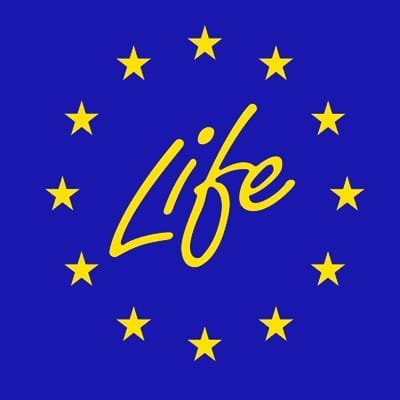LIFE Program
European funding for the environment and climate action
Summary
Introduction to the LIFE program
The LIFE programme is the European Union's flagship financial instrument dedicated exclusively to supporting projects in the areas of environment and climate action. Established in 1992, LIFE is today one of the fundamental pillars of European environmental policy and a key accelerator for the implementation of the European Green Deal.

Within the European funding ecosystem, LIFE occupies a unique position as the only program entirely dedicated to environmental and climate objectives. While other instruments such as Horizon Europe fund innovation more generally, LIFE focuses specifically on projects with a direct and measurable impact on the environment, biodiversity, and the fight against climate change.
The strategic objectives of the LIFE programme are fully aligned with the European vision of a transition to a clean, circular, carbon-neutral, energy-efficient, and resilient economy. The programme aims to:
- Contribute to the transition to a sustainable, circular, energy-efficient and climate-neutral economy
- Protect and improve the quality of the environment
- Halt and reverse the process of biodiversity loss
- Supporting the Natura 2000 network and EU biodiversity strategies
- Promoting good environmental and climate governance at all levels
For the period 2021-2027, the LIFE programme has a significantly increased overall budget of €5.43 billion, reflecting the EU's growing commitment to environmental and climate objectives.
Ambitious goals for a sustainable future
Specific objectives and priorities
The LIFE program is central to European environmental strategies, with clearly defined objectives and a concrete impact on the ground. Understanding its priorities will allow you to perfectly align your project with the evaluators' expectations.

Main thematic axes
LIFE particularly supports projects that develop clean technologies and solutions for climate neutrality, complementary to those financed by theInnovation Fund which focuses more on large-scale industrial decarbonization.
The LIFE programme is structured around four distinct sub-programmes, each with its own thematic priorities:
Nature and biodiversity
- Conservation and restoration of natural ecosystems
- Protection of endangered species
- Management of the Natura 2000 network
- Development of green and blue infrastructure
- Fight against invasive exotic species
Circular economy and quality of life
- Transition to the circular economy
- Improving air quality and reducing pollution
- Efficient waste and resource management
- Reduction of noise and chemical pollution
- Protection of water and soil quality
Mitigation and adaptation to climate change
- Development of innovative practices for adaptation to climate change
- Reduction of greenhouse gas emissions
- Improving the climate resilience of infrastructure and ecosystems
- Implementation of European climate policies
Transition to clean energy
- Removing market barriers for the energy transition
- Promotion of energy efficiency
- Small-scale deployment of renewable energy
- Awareness and training on energy issues
Sectoral priorities
Beyond these four sub-programmes, LIFE pays particular attention to projects which:
- Provide concrete solutions with a measurable impact on the environment or climate
- Have a demonstrative, innovative or pilot character
- Can be replicated and transferred to similar contexts across Europe
- Mobilize and involve key players from different sectors (public, private, associative)
- Contribute directly to the implementation of EU environmental directives and strategies
European strategic objectives supported
The LIFE programme contributes directly to several major European policy frameworks:
- The European Green Deal
- The EU Biodiversity Strategy to 2030
- The circular economy and the “zero pollution” action plan
- The European Climate Law and the Climate Change Adaptation Strategy
- The Farm to Fork Strategy for a Sustainable Food System
- The Habitats and Birds Directives and the Natura 2000 network
Expected impact at European level
LIFE projects must demonstrate their potential to generate significant impacts:
- Direct and measurable contribution to the EU's environmental and climate objectives
- Multiplier effects and replicability on a European scale
- Development and dissemination of best environmental practices
- Concrete improvement in the conservation status of species and habitats
- Raising awareness and mobilizing citizens around environmental and climate issues
- Catalyzing complementary investments in the areas of environment and climate

Types of projects funded
The LIFE program funds different types of projects depending on their objectives and scope:
- Standard Action Projects (SAP) :
- Pilot projects: Apply a new or previously untested technique or method
- Demonstration projects: Put into practice new or unknown solutions in the specific context of the project
- Good practice projects: Apply appropriate and economically viable techniques, methods and approaches
- Information, awareness and dissemination projects: Aim to support the communication and dissemination of information
- Strategic Integrated Projects (SIP) :
- Large-scale projects involving multiple stakeholders
- Implementation of regional, national or supranational environmental or climate strategies or action plans
- Budget typically in excess of 10 million euros with a strong component of leveraging other funds
- Strategic Nature Protection Projects (SNAP) :
- Specifically target the implementation of Natura 2000 priority action frameworks
- Large-scale projects for nature conservation
- Technical Assistance (TA) Projects :
- Support for the preparation of SIP and SNAP
- Capacity building for effective participation in the LIFE programme
- Other actions (OA) :
- Coordination and support actions for the transition to renewable energies and the improvement of energy efficiency
Typical project durations range from 2 to 5 years for standard projects, and up to 10 years for integrated strategic projects, with budgets ranging from a few hundred thousand euros to over 10 million euros.
Concrete examples of projects already funded
Here are some illustrative examples of projects that have benefited from LIFE funding:
- Ecological restoration of a degraded wetland with reintroduction of endangered species and implementation of sustainable management (Spain-Portugal)
- Development and deployment of an innovative technology for treating microplastics in urban wastewater treatment plants (France-Belgium-Netherlands)
- Creation of a network of ecological corridors for the preservation of large carnivores in the Carpathians (Romania-Slovakia-Poland)
- Implementation of an innovative low-carbon district heating system based on industrial heat recovery (Finland-Sweden)
Supported technological innovations
LIFE particularly supports projects which:
- Develop or test innovative environmental technologies
- Propose new approaches to environmental governance
- Integrate Nature-Based Solutions
- Apply innovative environmental monitoring and assessment methodologies
- Develop sustainable and circular economic models
Priority sectors
Although all sectors related to the environment and climate are eligible, the following areas have received particularly positive feedback:
- Conservation and restoration of biodiversity
- Nature-based solutions for climate change adaptation
- Circular economy and new sustainable business models
- Sustainable and climate-resilient cities
- Renewable energy and energy efficiency for local communities
- Sustainable agriculture and forestry
- Innovative water and waste management
- Pollution control and sanitation technologies

Support by MarketKaps

Specific expertise on this program
Marketkaps has extensive expertise in the LIFE program, developed through many years of successful support to public and private organizations. Our team includes program experts and technical experts in the fields of environment and climate, who are fully familiar with LIFE's specific evaluation criteria and expectations.
Our specialized experts master the technical, administrative and financial aspects of the program, and can guide you through the specificities of each LIFE sub-program and project type, from the initial eligibility assessment to post-funding administrative management.


Personalized support methodology
Our support approach for the LIFE program follows a proven 6-step methodology:
- Strategic diagnosis : In-depth analysis of your project, its potential environmental/climate impact and its suitability with LIFE criteria
- Optimal positioning : Identification of the sub-programme and type of LIFE project most suited to your initiative
- Constitution of the consortium : Mobilization of our European network to identify and integrate the necessary strategic partners
- Technical and financial structuring : Definition of work packages, deliverables, impact indicators and optimal budget distribution
- Drafting the proposal : Development of a comprehensive and convincing dossier, with particular focus on environmental impact and European added value
- Post-submission follow-up : Assistance during the negotiation phases with the Commission and implementation of project management

Services offered
Marketkaps offers complete or modular support according to your needs:
- Eligibility diagnosis and environmental/climate impact analysis
- Strategic orientation and positioning in the LIFE program
- Research and mobilization of relevant European partners
- Technical structuring of the project according to LIFE requirements
- Preparation of the financial file and budget optimization
- Complete drafting of the application file
- Implementation of environmental key performance indicators (KPIs)
- Preparation for evaluators' questions
- Administrative assistance for contractualization
- LIFE Project Management Training
- Support for technical and financial reporting

Eligibility conditions
Eligibility criteria for organizations
To be eligible for the LIFE program, candidates must meet the following conditions:
- Established legal entities : Legal entities registered in an eligible country
- Types of organizations : Public bodies, private commercial and non-commercial organizations, NGOs
- Eligible countries :
- EU Member States
- Overseas countries and territories (OCT)
- Third countries associated with the LIFE programme
- Third countries listed in the work programme (with restrictions)
For standard projects, applications can be submitted by a single beneficiary or by a consortium. For Strategic Integrated Projects (SIPs) and Strategic Nature Protection Projects (SNAPs), a consortium is generally expected.
Types of businesses concerned
LIFE is accessible to a wide range of organizations:
- SMEs and large companies : Particularly those developing innovative environmental technologies or services
- Public bodies : National, regional and local authorities, development agencies
- NGOs and associations : Environmental organizations, foundations, nature protection associations
- Research institutes and universities : Particularly in partnership with operational actors
- Landowners and managers of natural spaces : For nature conservation projects
Multi-stakeholder consortia combining scientific expertise, operational capacity and territorial anchoring are particularly valued.
Geographic criteria
The LIFE program mainly covers:
- The 27 member states of the European Union
- Countries associated with the program (such as Iceland, Liechtenstein, Norway)
- Candidate countries and potential candidates (with certain restrictions)
- European Neighbourhood Policy countries (under specific conditions)
For Nature and Biodiversity projects, concrete conservation actions must take place within the EU, unless otherwise justified. Actions in third countries must be essential to achieving the EU's environmental objectives.
Technical or scientific prerequisites
LIFE projects must meet several technical criteria:
- Solid scientific basis : Projects must be based on robust scientific data and knowledge
- Measurable impact : Ability to demonstrate and quantify environmental/climate impacts
- Innovative or demonstrative character : Clear added value compared to existing practices
- Replicability and transferability : Potential for replication in other European contexts
- Long-term sustainability : Credible strategy for sustaining results after the end of funding
Projects must also demonstrate their contribution to the specific objectives of the relevant LIFE sub-programme and their alignment with relevant European political priorities.


Financing arrangements
Financing rates by type of organization
Funding rates in the LIFE program vary depending on the sub-program and the type of project:
- Standard projects (SAP) :
- General co-financing rate: 60% of eligible costs
- Projects concerning priority habitats or species: up to 75%
- Strategic Integrated Projects (SIP) and Strategic Nature Protection Projects (SNAP) :
- Co-financing rate: 60% of eligible costs
- Technical assistance projects :
- Co-financing rate: 60% of eligible costs
- Other actions :
- Varies depending on specific calls, usually between 60% and 95%
The funding rate is the same for all beneficiaries, whether public, private or NGO organizations.
Grant ceilings
Funding amounts vary considerably depending on the type of project:
- Standard projects (SAP) :
- Typical EU contribution: between €500,000 and €5 million
- No formal ceiling, but very large projects are directed towards SIPs
- Strategic Integrated Projects (SIP) and Strategic Nature Protection Projects (SNAP) :
- Typical EU contribution: between 10 and 20 million euros
- These projects must also mobilize other complementary sources of financing.
- Technical assistance projects :
- Typical EU contribution: up to 100,000 euros for the preparation of SIP/SNAP
Eligible costs
Generally eligible cost categories include:
- Personnel costs : Salaries of teams working directly on the project
- Travel expenses : Missions directly linked to project activities
- Sustainable equipment : In proportion to their use in the project (depreciation)
- Consumables and supplies : Materials needed to implement the actions
- Subcontracting : Outsourced services (limited to 35% of the total budget)
- Other costs : Costs of dissemination, publications, translations, audits, etc.
- Indirect costs (overheads) : Package of 7% of eligible direct costs
Co-financing required
The LIFE program operates on the principle of co-financing, with several specific features:
- Beneficiaries must provide at least 40% of the total budget (25% for certain Nature projects)
- Co-financing may come from own resources or other non-European sources
- For SIPs and SNAPs, there is an obligation to mobilize at least one additional source of financing
- In-kind contributions are generally not accepted as co-financing.
- National funding can complement the EU contribution
A strong and diversified co-financing strategy is an important element of a successful application. Marketkaps can help you to identify and secure suitable sources of co-financing.


Application Process
Calendar and calls for projects
The LIFE program operates with a system of annual calls for projects:
- Publication of calls : Generally in spring (April-May)
- Submission phase : One or two-step process depending on the type of project
- Deadline for standard projects : Generally 3-4 months after publication of the call
- Deadline for SIP/SNAP : Two-phase process with concept note then full proposal
- Assessment : 5 to 8 months depending on the complexity of the project
- Contractualization : 3 to 5 months after selection
- Project launch : Generally during the first half of the following year
Required documents
The LIFE application requires the preparation of several key documents:
- Administrative forms (Part A): Information on partners, budget, declarations
- Technical description (Part B): Detailed presentation of the project and its objectives
- Detailed information (Part C): In-depth technical description, work plan, expected impacts
- Financial annexes : Detailed budget tables by partner and cost category
- Maps and photos : For projects involving field actions
- Statements of support : Letters of commitment from co-financiers and stakeholders
Strategic projects follow a two-step process with first a simplified concept note, then a full proposal for pre-selected projects.
Marketkaps supports you in the preparation of each of these documents, paying particular attention to overall consistency and highlighting the environmental impact.
Submission Steps
The LIFE submission process includes the following steps:
- Creating an account on the European funding portal (Funding & Tender Portal)
- Project Registration and obtaining an identification code
- Invitation of partners to join the proposal on the portal
- Completing administrative forms with basic information
- Development of technical documents detailing the project
- Preparation of financial annexes and supporting documents
- Final check of conformity and consistency
- Electronic submission before the deadline
For strategic projects (SIP/SNAP), submission is done in two distinct phases spaced several months apart.
Proposal evaluation criteria
LIFE projects are evaluated according to four main criteria:
- Relevance (0-20 points) :
- Contribution to the specific objectives of the LIFE programme
- Consistency with European political priorities
- Global strategic design and European added value
- Impact (0-25 points) :
- Ambition and credibility of expected impacts
- Long-term sustainability of results
- Potential for replication and transfer to other contexts
- Quality (0-20 points) :
- Clarity, logic and completeness of the proposal
- Technical feasibility and quality of the methodology
- Cost-effectiveness and value for money
- Resources (0-15 points) :
- Adequacy of resources with objectives
- Team skills and experience
- Governance structure and risk management
The minimum threshold required is 55/80 points, with a minimum of 50% points for each criterion.
Marketkaps optimizes your application to maximize your score on each of these criteria, with particular attention to demonstrating concrete environmental impacts.


Success rates and key factors
Success statistics for this program
The LIFE program has the following characteristics in terms of success rate:
- Average success rate : Approximately 15-20% on European scale for standard projects
- Variation by subroutine : Slightly higher for Nature and Biodiversity (17-22%)
- Variation by project type : Lower rates for innovative projects (10-15%)
- Competition : Constantly increasing, with more than 800 applications per year
- Allocated budget : Significant growth for the period 2021-2027, slightly increasing the chances of success
Common Mistakes to Avoid
Our experience has allowed us to identify the main errors that penalize LIFE applications:
- Low additionality : Insufficient demonstration of added value compared to existing actions
- Vague environmental impact : Lack of precise quantification of environmental benefits
- Inconsistency with EU policies : Poor articulation with European strategic frameworks
- Low replicability : Lack of a clear strategy for the dissemination and reproduction of results
- Unbalanced budget : Insufficient cost-effectiveness or poorly justified costs
- Incomplete partnership : Lack of key players necessary for the success of the project
- Limited durability : Insufficient strategy for continuing actions after the end of funding
Marketkaps ensures that these weak points are corrected before submission to maximize your chances of success.
Differentiating factors for a successful application
The factors that make the difference in obtaining LIFE funding are:
- Quantified environmental impact with precise indicators and measurable objectives
- Innovative or demonstrative character clearly established
- Balanced consortium including public authorities, technical experts and end users
- Strategic alignment with European political priorities
- Robust replication plan demonstrating the potential for dissemination on a European scale
- Cost-effectiveness approach optimized and justified
- Communication strategy adapted to different stakeholders
- Post-project plan credible for the sustainability of results
Marketkaps feedback
Our experience in supporting numerous LIFE projects has enabled us to identify best practices:
- The early involvement of the relevant public authorities significantly strengthens the credibility of the project
- Demonstrating an integrated approach combining multiple environmental benefits is highly valued.
- A judicious balance between concrete actions on the ground (60-70%) and communication/dissemination actions (15-20%)
- The use of standardized tools to quantify impacts (carbon footprint, life cycle analysis, etc.)
- The mobilization of diversified co-financing demonstrates the commitment of stakeholders
- A realistic timetable that allows sufficient time for administrative procedures and contingencies

FAQ about the LIFE program
Frequently Asked Questions by Businesses
Can an SME coordinate a LIFE project alone?
Yes, SMEs can submit and coordinate a LIFE project, particularly for Standard Action Projects (SAPs). Although the program does not formally require a consortium for SAPs, a multi-stakeholder partnership is often better evaluated because it allows for broader impact and greater replicability. Marketkaps can help you determine the optimal project structure based on your objectives.
Does the LIFE program fund basic research?
No, LIFE does not fund basic research. The program is geared toward the practical application, demonstration, and deployment of environmental and climate solutions. Projects must have a direct and measurable impact on the ground. Research may constitute a minor component of the project (maximum 20% of the budget) if it is necessary to implement or evaluate concrete actions.
Can LIFE projects take place outside the EU?
The main actions of a LIFE project must generally take place within the EU. However, limited actions may be implemented in third countries if they are necessary to achieve EU environmental objectives or to ensure the effectiveness of interventions within the European territory (e.g., protection of migratory species).
How does LIFE compare to other European environmental programmes?
LIFE focuses on the environment and climate action specifically, while programs like Horizon Europe address these themes within a broader research and innovation framework. LIFE is generally more accessible to communities and SMEs than the major framework programs.
What is the time between submission and project start?
The entire process from submission to actual project launch typically takes between 8 and 12 months. This includes 5-8 months of evaluation and 3-4 months of contracting. Therefore, it's essential to anticipate and plan your timeline accordingly, especially for projects with seasonal constraints.
How are the environmental impacts of a LIFE project assessed?
The assessment of environmental impacts is based on several key elements:
- Key Performance Indicators (KPIs) : LIFE uses a standardized set of indicators that all projects must report.
- Calculation method : The proposal must describe precisely the methodology used to quantify the impacts
- Baseline : Establishing a clear baseline is crucial for measuring progress.
- Additionality : Environmental benefits must be clearly attributable to the project
- Direct and indirect impacts : Distinction between immediate effects and longer-term effects
- Monitoring : Rigorous monitoring plan with data collection during and after the project
Marketkaps supports you in defining relevant indicators and in precisely quantifying the expected impacts, a determining element for the success of a LIFE application.
How to effectively structure a LIFE consortium?
An effective LIFE consortium must meet several criteria:
- Complementarity : Each partner must bring specific expertise or capacity
- Complete value chain : Include solution developers, users, validators and disseminators
- Territorial balance : For transnational projects, a coherent geographical distribution
- Involvement of public authorities : Strengthens credibility and prospects for sustainability
- Optimal size : 3 to 8 partners for standard projects, 5 to 15 for strategic projects
- Operational capacity : Each partner must demonstrate their experience in their field of intervention
Maximize your chances of success with our expertise
Ready to launch your LIFE project?
Marketkaps supports you every step of the way, from initial assessment to final submission, to maximize your chances of securing LIFE funding and generating significant environmental impact.
Please contact us with any questions or to discuss your environmental or climate project. Together, let's contribute to a more sustainable future for Europe and the planet.


